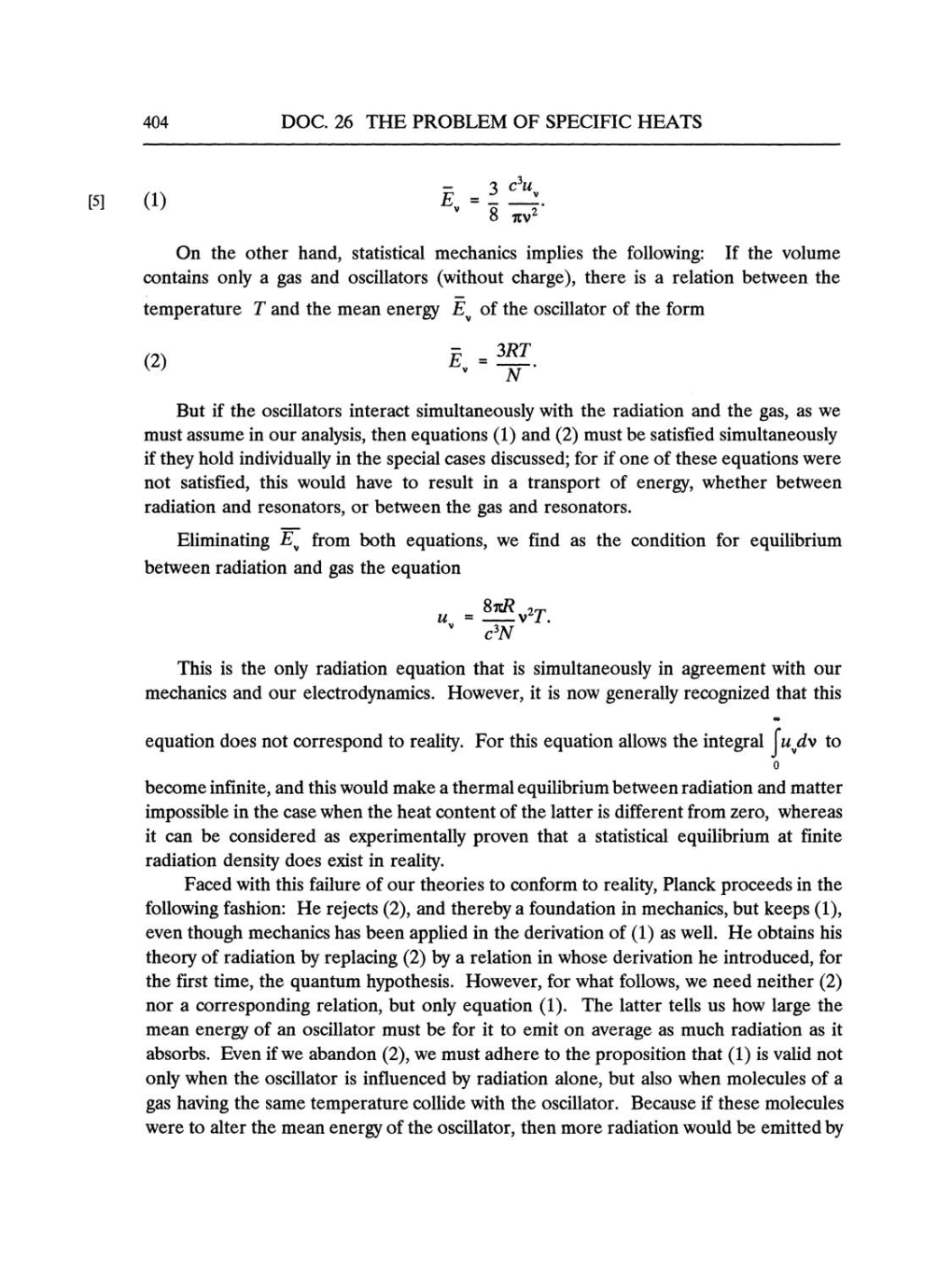404
DOC. 26
THE PROBLEM OF SPECIFIC HEATS
-
3 c3w
(1)
E.
=
f
v
8
Ttv2
[5]
On
the other
hand,
statistical mechanics
implies
the
following:
If the
volume
contains
only a gas
and
oscillators
(without charge),
there
is
a
relation between the
temperature
T and
the
mean energy
Ev
of
the
oscillator of the
form
(2)
£v
=
~
But
if
the
oscillators
interact
simultaneously
with
the radiation and the
gas, as
we
must
assume
in
our analysis,
then
equations
(1)
and
(2)
must
be
satisfied
simultaneously
if
they
hold
individually
in
the
special
cases discussed;
for
if
one
of these
equations
were
not
satisfied,
this would have to
result
in
a
transport
of
energy,
whether between
radiation and
resonators,
or
between the
gas
and
resonators.
Eliminating
Ev
from
both
equations,
we
find
as
the condition for
equilibrium
between radiation and
gas
the
equation
8
%R
u
=
vlT.2T
v
cW
This
is
the
only
radiation
equation
that
is
simultaneously
in
agreement
with
our
mechanics
and
our
electrodynamics.
However,
it
is
now generally recognized
that
this
equation
does
not
correspond
to
reality.
For
this
equation
allows
the
integral
/uvdv
to
become
infinite,
and this would
make
a
thermal
equilibrium
between radiation
and matter
impossible
in
the
case
when
the heat
content
of
the
latter
is
different
from
zero,
whereas
it
can
be
considered
as experimentally proven
that
a
statistical
equilibrium
at finite
radiation
density
does exist in
reality.
Faced
with this
failure of
our
theories
to
conform
to
reality,
Planck
proceeds
in
the
following
fashion:
He
rejects
(2),
and
thereby a
foundation
in
mechanics,
but
keeps
(1),
even
though
mechanics has
been
applied
in the derivation of
(1) as
well.
He obtains
his
theory
of radiation
by
replacing
(2) by a
relation
in whose
derivation he
introduced,
for
the
first
time,
the
quantum
hypothesis.
However,
for
what
follows,
we
need neither
(2)
nor a corresponding
relation,
but
only
equation
(1).
The latter
tells
us
how
large
the
mean
energy
of
an
oscillator
must be for it
to
emit
on
average
as
much
radiation
as
it
absorbs. Even if
we
abandon
(2), we
must
adhere
to
the
proposition
that
(1)
is
valid not
only
when
the oscillator
is
influenced
by
radiation
alone,
but
also
when
molecules
of
a
gas having
the
same
temperature
collide with
the
oscillator.
Because
if
these
molecules
were
to
alter the
mean energy
of
the
oscillator,
then
more
radiation
would
be emitted
by
